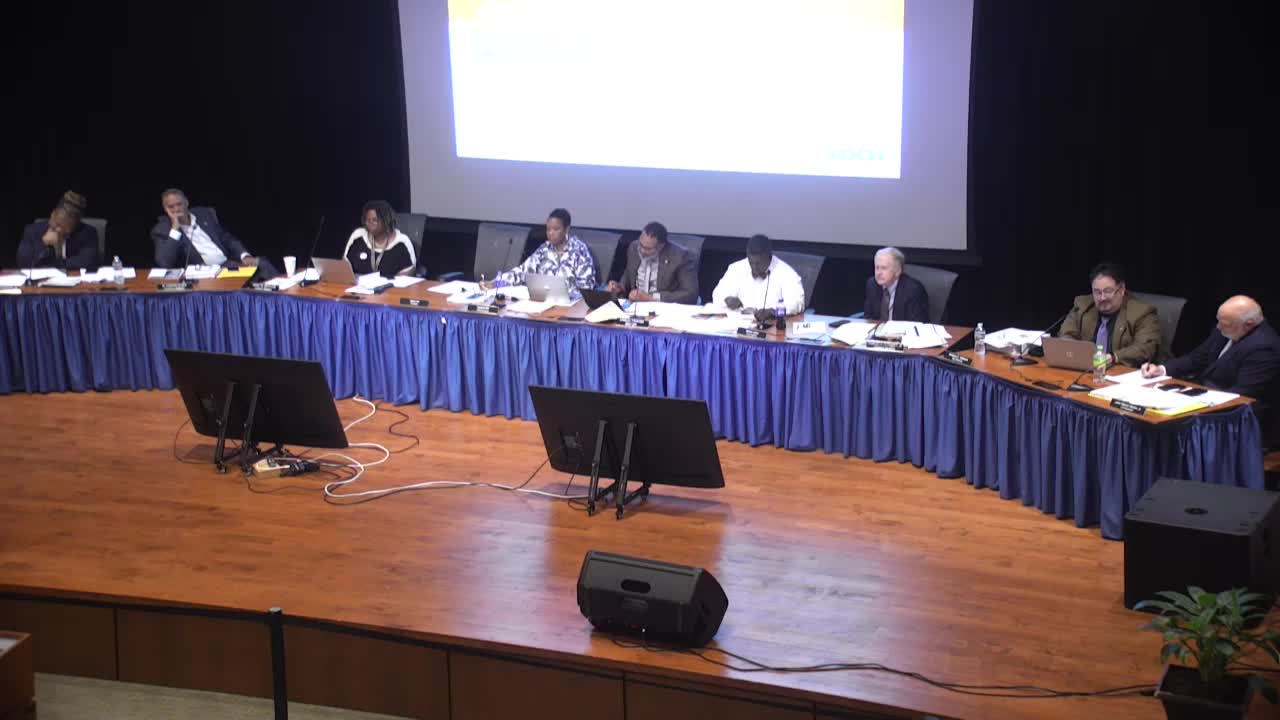City Council Considers Controversial Rezoning Proposal
June 18, 2024 | Petersburg (Independent City), Virginia

This article was created by AI summarizing key points discussed. AI makes mistakes, so for full details and context, please refer to the video of the full meeting. Please report any errors so we can fix them. Report an error »

During a recent city council meeting, significant discussions centered around the proposed rezoning of several properties on West Washington Street and amendments to architectural regulations.
Naomi Sayadmock from the planning department presented the ordinance for rezoning properties located at 303, 309, 315, 323, 419, and 431 West Washington Street from R3 and B2 to the RB Office Apartment District. This change would allow for additional uses such as offices and clinics in the residential areas while prohibiting retail and restaurant operations in the commercial zones. The planning commission had previously recommended denial of the rezoning, citing a lack of continuity with the city’s comprehensive plan, which emphasizes residential and community-focused developments over commercial uses.
Public input was solicited, with resident Sarah Melissa Wiediak expressing support for the denial, arguing that protecting residential areas is crucial to maintaining the character of the neighborhood. She warned against the potential influx of commercial establishments that could disrupt the community's integrity.
In a related discussion, the council also considered amendments to Article 25 of the zoning ordinance, aimed at enhancing architectural standards for new constructions. The proposed changes would require new developments to adhere to specific aesthetic guidelines, ensuring that all sides of buildings maintain high-quality materials and that mechanical equipment is obscured from public view. This initiative is part of a broader effort to preserve the city's architectural heritage and improve visual appeal.
Council members debated the necessity of legal review for such amendments to prevent potential ambiguities that could lead to disputes. The council ultimately voted in favor of adopting the proposed architectural standards, reflecting a commitment to maintaining the city's character while accommodating future development.
These discussions highlight the ongoing balancing act between development and preservation within the city, as officials navigate community concerns and regulatory frameworks.
Naomi Sayadmock from the planning department presented the ordinance for rezoning properties located at 303, 309, 315, 323, 419, and 431 West Washington Street from R3 and B2 to the RB Office Apartment District. This change would allow for additional uses such as offices and clinics in the residential areas while prohibiting retail and restaurant operations in the commercial zones. The planning commission had previously recommended denial of the rezoning, citing a lack of continuity with the city’s comprehensive plan, which emphasizes residential and community-focused developments over commercial uses.
Public input was solicited, with resident Sarah Melissa Wiediak expressing support for the denial, arguing that protecting residential areas is crucial to maintaining the character of the neighborhood. She warned against the potential influx of commercial establishments that could disrupt the community's integrity.
In a related discussion, the council also considered amendments to Article 25 of the zoning ordinance, aimed at enhancing architectural standards for new constructions. The proposed changes would require new developments to adhere to specific aesthetic guidelines, ensuring that all sides of buildings maintain high-quality materials and that mechanical equipment is obscured from public view. This initiative is part of a broader effort to preserve the city's architectural heritage and improve visual appeal.
Council members debated the necessity of legal review for such amendments to prevent potential ambiguities that could lead to disputes. The council ultimately voted in favor of adopting the proposed architectural standards, reflecting a commitment to maintaining the city's character while accommodating future development.
These discussions highlight the ongoing balancing act between development and preservation within the city, as officials navigate community concerns and regulatory frameworks.
View full meeting
This article is based on a recent meeting—watch the full video and explore the complete transcript for deeper insights into the discussion.
View full meeting
